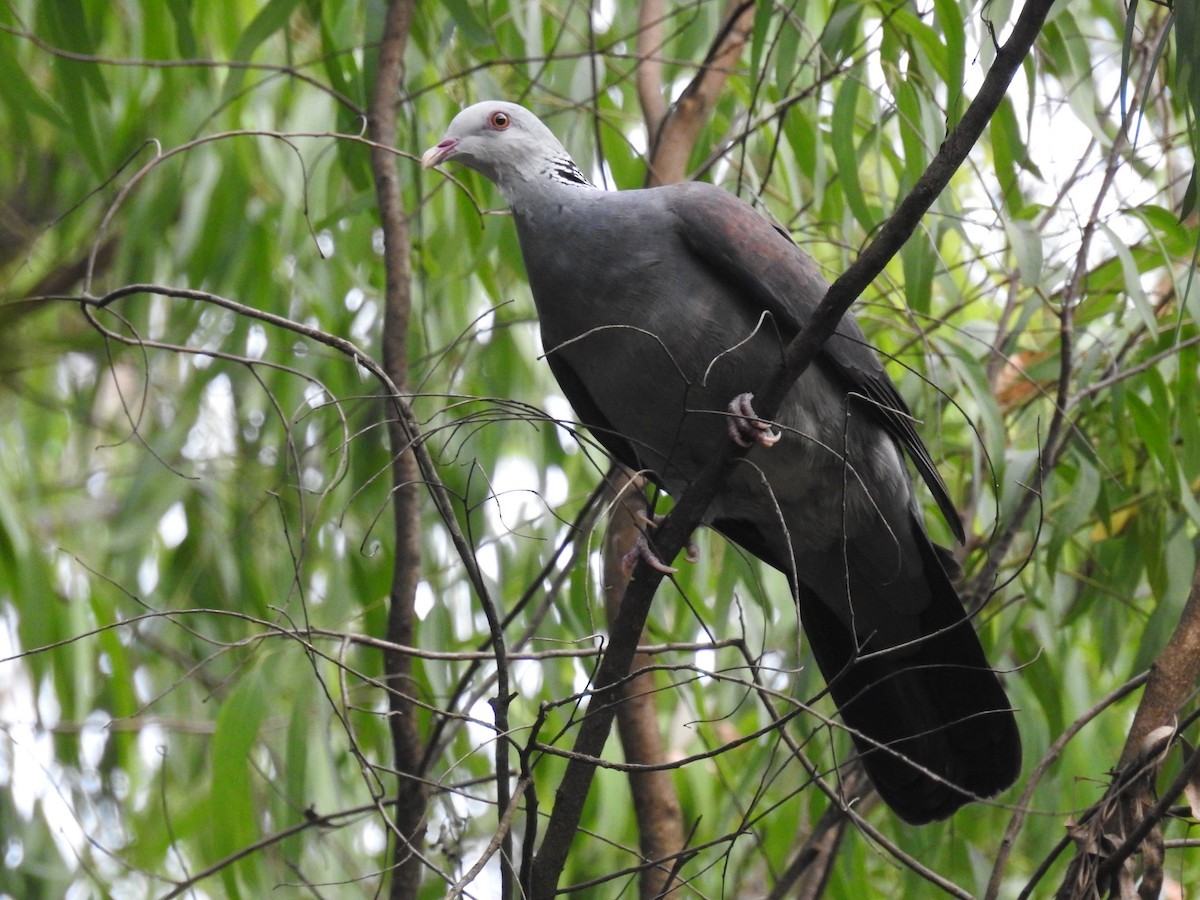Nilgiri Wood Pigeon
A species of Old World Pigeons Scientific name : Columba elphinstonii Genus : Old World Pigeons
Nilgiri Wood Pigeon, A species of Old World Pigeons
Botanical name: Columba elphinstonii
Genus: Old World Pigeons
Content
Description General Info
 Photo By Ashwin Viswanathan
Photo By Ashwin Viswanathan Description
This pigeon appears dark grey and a black and white patterned patch made of white tipped stiff feathers on the back of the neck is distinctive. The mantle is chestnut. The male has a paler grey crown while the female has a darker grey crown with a pale throat. The most confusable other species is the mountain imperial pigeon but that species has paler underwing coverts. The feet and the base of the bill are red. The species is evolutionarily close to the Ceylon woodpigeon Columba torringtoni and the ashy wood pigeon Columba pulchricollis which form a clade that is basal within the Old World genus Columba. The binomial commemorates Mountstuart Elphinstone (1779–1859). 
Size
42 cm
Nest Placement
Tree
Feeding Habits
Nilgiri Wood Pigeon predominantly consumes fruits, berries, and buds, foraging mostly in the trees but also on the ground for berries and snails. Over 70% of their diet comprises fruits, with soil ingestion noted during breeding season, likely for calcium.
Habitat
The habitat of nilgiri Wood Pigeon encompasses moist evergreen forests within broader subtropical or tropical regions. These forests are characterized by a consistent presence of tree cover, high humidity, and a biodiverse environment fostering a rich undergrowth, which is vital for the nilgiri Wood Pigeon to thrive. The species is dependent on these dense forested areas that afford ample food resources and nesting sites.
Dite type
Granivorous
General Info
Feeding Habits
Bird food type
Behavior
Nilgiri wood pigeons are usually seen singly, in pairs or in small groups, feeding almost entirely in the trees but sometimes descending to the ground to forage on fallen fruits. Although feeding mainly on fruits they have been recorded taking small snails and other invertebrates. The breeding season is March to July during which time they make a flimsy platform of twigs and lay a single white egg which is usually visible from below the nest. They feed on large fruits and may play an important role in dispersal of the seeds of many forest trees. Fruits of the family Lauraceae are particularly favoured and most of their food is gathered by gleaning on the outer twigs of the middle and upper canopy. They have been recorded ingesting soil that may provide mineral nutrients or aid digestion. They often make movements within the forest according to the fruiting seasons of their favourite trees. Their call is a loud langur-like low-frequency hooting "who" followed by a series of deep "who-who-who" notes. 
Distribution Area
The species is mainly found along the Western Ghats and in the Nilgiri Hills. Although found mainly in the hills, it is sometimes seen at lower elevations within the Western Ghats. A few relict populations survive on the high elevations hills of the peninsula such as the Biligirirangan Hills and Nandi Hills near Bangalore. 

 Photo By Ashwin Viswanathan
Photo By Ashwin Viswanathan Scientific Classification
Phylum
Chordates Class
Birds Order
Pigeons and doves Family
Dove Genus
Old World Pigeons Species
Nilgiri Wood Pigeon